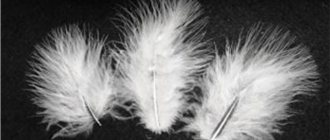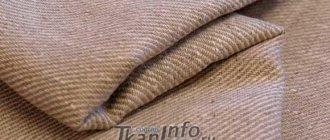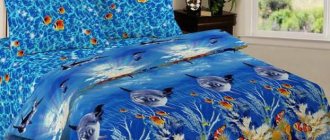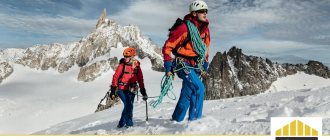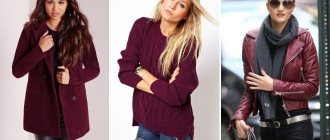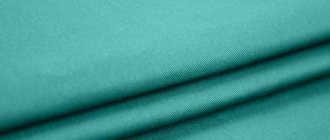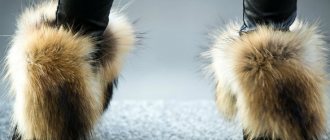Clothing with a membrane has long become a necessary attribute of winter fishing and hunting. It not only protects from wind and getting wet during sleet or heavy rain, but also retains heat perfectly.
Today, the market for winter clothing with a membrane is very diverse. There are many manufacturers, each of which offers membrane fabric with different indicators of waterproofness and vapor permeability. In addition, all brands are in different price categories, which makes clothing with a membrane accessible to everyone.
Read more about manufacturers, membrane properties and characteristics in our article.
Membrane properties and characteristics
When choosing a product with a membrane, you need to pay special attention to the main characteristics of the membrane fabric:
- water resistance;
- vapor permeability;
- wind protection
Membrane water resistance
The water resistance of the membrane is measured in millimeters of water. This parameter shows how much moisture the membrane fabric can withstand while remaining dry. Based on the level of water resistance, membranes can be divided into several groups:
- Up to 2000 mm - outerwear with a membrane, which can be used for walking on a foggy day.
- A jacket with an index of 2000 to 4000 mm will withstand up to 2-3 hours of drizzling rain.
- Clothing with parameters from 4000 to 7000 mm, as a rule, is used during short-term rains of short duration. A classic representative of the membrane with such indicators is DryShield DryShield
is a waterproof, breathable membrane. Read more.
- An indicator from 7000 to 10000 mm means that the jacket is suitable for prolonged heavy rains. Clothes with such membrane parameters can be found from the Danish brand Seeland.
- From 10,000 and above - clothing that will provide maximum protection from wet snow and long-term heavy rains. The Gore-Tex membrane corresponds to these indicators Gore-Tex
Gore-Tex fabrics are based on an extremely thin membrane that is waterproof, windproof and breathable. Read more.
From different manufacturers you can find winter clothes with a membrane, the indicators of which are equal to 20,000, 30,000, and even 40,000 mm of water column. If you are not going to use the jacket or trousers in ultra-extreme conditions, then there is no point in chasing high performance.
Membrane vapor permeability
The vapor permeability indicator is responsible for the “breathing” properties of the membrane. The numerical value shows how much water vapor can pass through a square meter of membrane in 24 hours. Vapor permeability is indicated as follows: “g/m²”. Based on the level of vapor permeability, membrane fabrics can be divided into the following groups:
- Up to 3000 g/m² – basic vapor-permeable properties. Clothing with such indicators is perfect for walking in the city. Alova membrane Alova
- a material of synthetic origin with a membrane water-repellent coating on a knitted basis. More details - a typical representative of a membrane with such properties.
- From 5000 to 8000 g/m² – average vapor permeable properties. You should choose a jacket with these characteristics for moderate physical activity. Among brands with such indicators, the most popular membrane is the Japanese manufacturer DryShield DryShield
is a waterproof, breathable membrane. Read more.
- From 8000 g/m² and above – high vapor-permeable properties. Products with high vapor permeability are designed for intense physical activity and for those who work “to the limit.” Membranes with these properties - SHIELD-TEX SHIELD-TEX
- allows you to combine in one fabric a large number of different technologies for different climatic conditions from plus to minus temperatures. More details and Gore-Tex Gore-
Tex
Gore-Tex fabrics are based on an extremely thin membrane, waterproof, windproof and vapor-permeable. More details.
Wind protection
Any outerwear with a membrane is windproof, but not everyone can protect against strong gusts of wind. If you just need a windproof item, then look for products with special markings windproof (windproof) and wind-resistant (wind protection).
Gore-Tex membrane provides the best protection from strong winds
Gore-Tex fabrics are based on an extremely thin membrane that is waterproof, windproof and breathable. Read more.
Sartofluor® GA filter elements - filters for sterilizing filtration of air and gases
Sartofluor® GA are based on a hydrophobic PTFE membrane, specifically designed for sterile ventilation and sterilizing filtration of air and gases.
The filters are specifically designed for sterilizing ventilation and gas handling applications where GMP compliance is mandatory. Due to its constant hydrophobicity, Sartofluor® GA provides the highest process safety, even with high volume gas flows, high humidity and mandatory in-line steam sterilization. Read more Sartofluor® LG filter elements - for sterilizing filtration of aggressive media, as well as air and gases.
Sartofluor® LG are specially designed for sterilizing filtration of aggressive media (acids and alkalis) and solvents. Thanks to the hydrophobic PTFE membrane, Sartofluor® LG cartridges and capsules are also suitable for sterilizing gas filtration or venting of containers where GMP compliance is mandatory. More details
Sartopure® GA filters are depth cartridges for sterilizing filtration of air and gases.
Sartopure® GA 0.2 µm filters are specifically designed for the food industry and can be used for all air filtration and ventilation applications that do not require the use of membrane filters. The 10” Sartopure® GA cartridge provides a flow rate of approximately 40 m2/h at a differential pressure of 10 mbar. This ability makes Sartopure® GA the filter of choice for high-performance fills or for breathing large tanks. More details
About companies
At first glance, it seems that there is simply an unrealistic number of manufacturers, since the list of names is huge. But in reality, it turns out that not many companies produce high-quality membranes. The fact is that many brands that manufacture clothing order membranes that are essentially identical and come up with their own names for them. For example, the widely advertised Teaxapore membrane from the German company JackWolfskin is nothing more than the long-known Entrant fabric from the Japanese company Toray; they also work closely with the American company Marmot and produce the Marmot MemBrain membrane.
Speaking about companies that produce membranes, it is impossible not to talk about Gore-tex, or more correctly “WL Gore & Associates”, because Gor-tex is only one of the fabrics that they produce. Yes, and Gor-tex has a dozen more articles with different characteristics. By the way, it was Gore-tex that was the first to use the combined membrane technology, thereby establishing itself as an industry leader for many years.
Another interesting membrane is eVent. Its peculiarity is that although it is a porous membrane, its fibers are coated with polyurethane; while with the same Gore-tex, polyurethane is applied in a continuous layer to the main film. This significantly increases the breathability of the fabric. eVent is a rather expensive material and, in addition, there are difficulties with gluing seams on products made from this membrane; as a result, the price of the final product is quite high.
You can delve into the names and technologies used for a long time, but, it seems to me, the real qualities of products made from membrane fabric can only be learned from personal experience. Many factors influence the behavior of a membrane under different conditions, and what is ideal for one person may not be ideal for another. With experience, you yourself will understand which points to pay more attention to and what you can close your eyes to. For your first purchases, I, as always, advise you to listen to the descriptions and advice of the clothing and equipment manufacturers themselves. Believe me, they do a very great job of designing and creating models and all this for you and me. Of course, their goal is to make money, but self-respecting brands are primarily aimed at long-term friendship with us, so don’t be afraid to trust those whose profession is to create comfortable conditions in the toughest and most unpredictable situations.
What is a membrane anyway?
The membrane is perhaps the main material in tourism, which causes heated debate more than others. Most likely this is because this word is used in many other areas: from astronautics to medicine, and a little confusion arises. But in our case, the membrane is a material that is designed to protect tourists and travelers from external weather conditions and at the same time remove fumes from the inside of the product to the outside, or simply “Breathe”. We will try to use the word “breathe” less often, since it is precisely because of its incorrect interpretation that the membrane has become overgrown with many misconceptions.
The easiest way to imagine what a membrane is is as follows: take a very ordinary piece of polyethylene and make a dozen holes in it with a thin needle - that’s all! We have a simple membrane in our hands. Like any membrane, ours has two main characteristics: water resistance and vapor permeability, and it’s quite easy to understand what’s what. Let's put the holey polyethylene on the flask with water. By turning the flask over and observing whether water flows through, we will determine the water resistance of our membrane. And if we boil water in a flask and observe how much steam comes out through the holes, we will measure the vapor permeability.
Such a simple example allows us to understand the following: A membrane is the same material as base fabrics, only with a different structure and chemical composition. That is, it does not have any mechanical valves that open for sweat and close from the outside from rain (many will find this funny, but having worked in a store for many years, I assure you that this is not the most exotic version). And second, important: a real membrane, like our piece of polyethylene, does not have a side - it works in both directions the same way! This means that a drop of sweat from the inside will also not pass through the jacket, just as a drop of rain will not pass from the outside. At the same time, water vapor from the surrounding atmosphere can pass through the membrane storm jacket in the same way as evaporation from the body goes out through it.
I think I’ve written enough to understand that the membrane is not a magical substance that magically protects you from bad weather and instantly removes excess moisture out.
And now, quite naturally, the question arises: “Does the membrane work at all, and do we need it?” The answer is clear – it works, and yes, it’s much more comfortable with it! You don’t think that millions of dollars spent on developing hundreds of types of membranes went to needles and polyethylene? I’m sure not, so we will continue to talk only about modern technologies.
